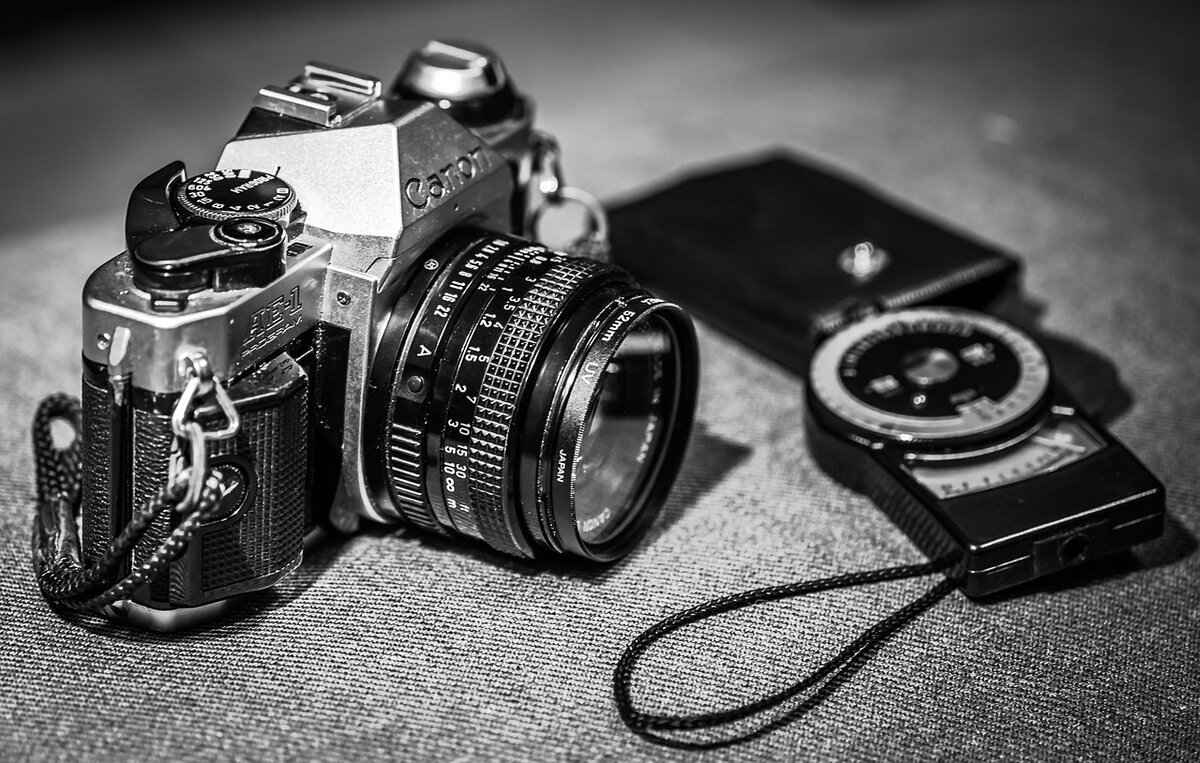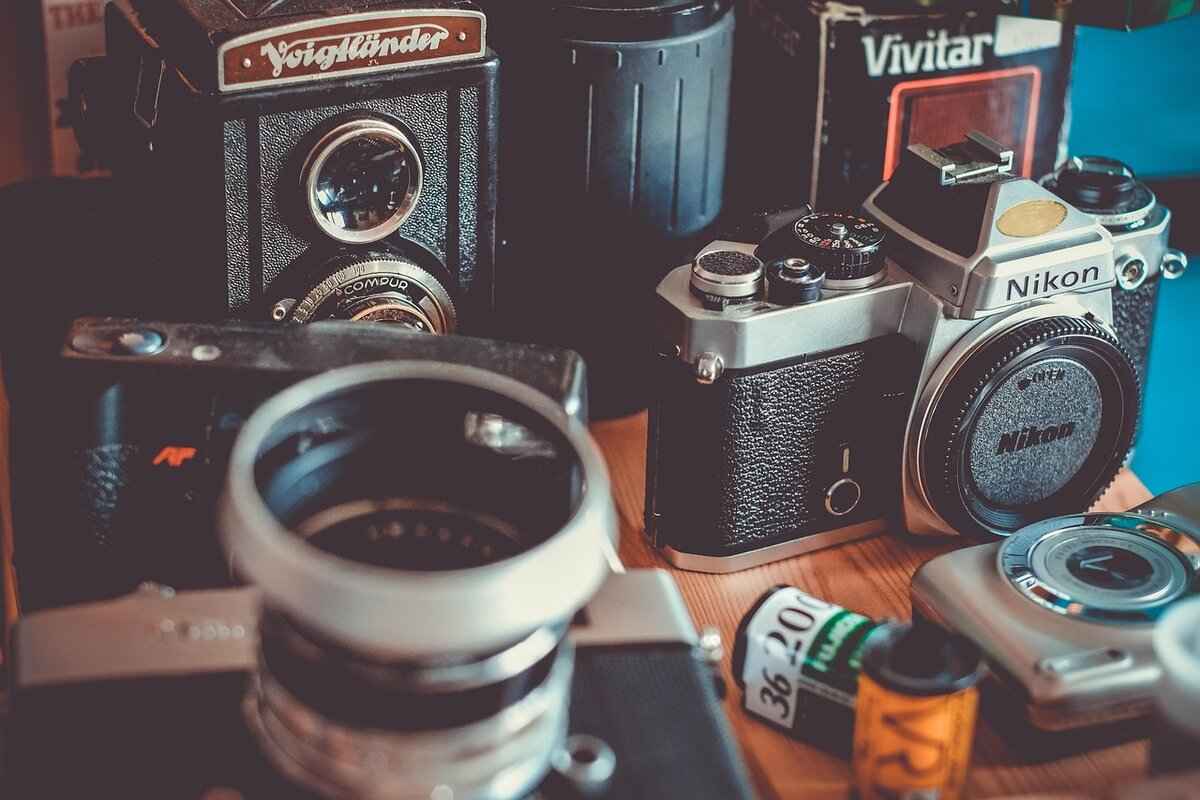When it comes to capturing breathtaking moments with your action camera, selecting the right memory card is essential. With numerous options available, understanding the key factors that influence your choice can enhance your filming experience. In this guide, we will explore the important aspects of speed ratings, storage capacities, and compatibility with various camera models to ensure you make an informed decision.
Action cameras are designed for high-performance recording in dynamic environments. Therefore, a suitable memory card must meet specific criteria:
- Durability: Look for cards that are shockproof, waterproof, and temperature-resistant.
- Speed: High-speed cards are crucial for recording high-resolution videos without lag.
- Capacity: Choose a card that can store ample footage based on your filming habits.
Speed is a critical factor for action cameras, especially when recording high-resolution video at fast frame rates. A slow memory card can lead to dropped frames and poor video quality. Thus, understanding speed ratings is vital.
Memory cards are classified by speed ratings, which indicate their performance. The primary classes include:
- Class 10: Minimum write speed of 10 MB/s, suitable for Full HD video.
- UHS-I: Offers faster speeds, ideal for 4K recording.
- UHS-II: Provides even higher speeds, ensuring seamless recording in demanding scenarios.
Selecting the appropriate speed rating depends on your recording requirements. For 4K video, opt for UHS-I or UHS-II cards to prevent buffering and ensure smooth playback.
Storage capacity is another vital consideration. Depending on your filming habits, you may require different amounts of storage:
- 16GB: Suitable for short clips or low-resolution recording.
- 64GB: Ideal for a day of shooting in Full HD.
- 128GB and above: Recommended for extensive 4K filming sessions.
To estimate your storage needs, consider the following formula: multiply the average video file size by the total recording time. This will help you determine the right capacity for your projects.
Not all memory cards are compatible with every action camera. Before purchasing, check your camera’s specifications. Popular brands like GoPro and DJI often have specific requirements for memory cards.
Different brands may have unique needs when it comes to memory cards:
- GoPro: Recommends UHS-I or UHS-II cards for optimal performance.
- DJI: Typically requires high-speed cards for smooth operation.
Refer to your camera’s user manual or the manufacturer’s website to find detailed compatibility information. This ensures you select a memory card that will work seamlessly with your device.
Here are some of the best memory cards available, focusing on speed, storage, and compatibility:
- SanDisk Extreme Pro: Excellent for 4K video with high write speeds.
- Lexar Professional 1000x: A reliable option for action cameras, offering great performance.
- Samsung EVO Plus: Budget-friendly yet high-performing for various recording needs.
For those filming in 4K, consider cards like the SanDisk Extreme Pro or Lexar Professional 1000x, which excel in high-resolution recording.
You don’t need to break the bank for a good memory card. The Samsung EVO Plus provides excellent performance at an affordable price, making it a great choice for budget-conscious users.

What Makes a Memory Card Suitable for Action Cameras?
Choosing the right memory card for your action camera is essential for capturing those unforgettable moments in stunning detail. Action cameras are designed to handle extreme conditions and high-performance recording, which means that the memory card you select must meet specific requirements to ensure optimal performance.
Understanding the unique requirements of action cameras is crucial. This section delves into the attributes that make a memory card ideal for high-performance recording.
- Speed: The speed of a memory card is one of the most critical factors. Action cameras often record in high resolutions, such as 4K or even 8K, which demands a card that can write data quickly. Look for cards with UHS (Ultra High Speed) ratings, as these are designed to handle high data transfer rates.
- Storage Capacity: Depending on your filming habits, the storage capacity you need can vary significantly. Action cameras can generate large files, especially when recording lengthy videos. A card with a minimum of 32GB is often recommended, but for extended shooting sessions, consider options of 64GB or more.
- Durability: Action cameras are frequently used in rugged environments. Therefore, the memory card should be durable and resistant to water, shock, and extreme temperatures. Look for cards that are specifically labeled as waterproof or shockproof.
- Compatibility: Not all memory cards are compatible with every action camera. Always check your camera’s specifications to ensure that the card you choose is supported. Some cameras may only accept certain types of cards, such as MicroSD or SDHC.
When selecting a memory card, it’s also essential to consider the write speed. This is particularly important for video recording, as a slower card can result in dropped frames or corrupted files. Cards are often rated with a class number (Class 10, UHS-I, UHS-II) that indicates their minimum write speed. For action cameras, a Class 10 or UHS-I card is generally sufficient, but for 4K recording, UHS-II cards are recommended for their superior speed.
Furthermore, video speed class ratings are crucial for continuous video recording. These ratings ensure that the card can sustain the necessary write speed for high-bitrate video formats. If you’re planning to shoot in 4K or higher resolutions, look for cards with a Video Speed Class (V30 or V60) rating.
Another consideration is brand reliability. Not all memory cards are created equal, and opting for reputable brands can save you from potential issues. Brands like SanDisk, Lexar, and Samsung are known for their high-quality memory cards that are widely used in action cameras.
In summary, when choosing a memory card for your action camera, prioritize speed, storage capacity, durability, compatibility, and brand reliability. By understanding these factors, you can select a memory card that not only meets your recording needs but also enhances your overall filming experience.

Why is Speed Important in Action Camera Memory Cards?
When it comes to action cameras, speed is not just a feature; it is a necessity. The performance of an action camera can be significantly influenced by the speed of the memory card used. This is particularly true when recording high-resolution videos, where a fast and reliable memory card is essential for capturing every detail. In this section, we will explore why speed is crucial for action camera memory cards and how it impacts your recording experience.
Action cameras are often used in dynamic environments, such as during sports or outdoor adventures. These situations demand quick data transfer rates to ensure that the camera can keep up with the action. If the memory card is too slow, it can lead to dropped frames, stuttering video, or even complete recording failures. This is why understanding speed ratings is vital when choosing a memory card for your action camera.
Memory cards are categorized into different speed classes, which indicate their minimum write speeds. The most common classes include:
- Class 10: Minimum write speed of 10 MB/s, suitable for HD video recording.
- UHS-I: Offers faster speeds, with U1 and U3 ratings indicating minimum write speeds of 10 MB/s and 30 MB/s, respectively.
- Video Speed Class (V30, V60, V90): Designed specifically for video recording, with V30 supporting 30 MB/s and V90 supporting 90 MB/s.
The higher the speed class, the better the performance, especially when recording high-resolution videos or burst shooting. For instance, if you plan to record in 4K resolution, a memory card with a UHS Speed Class of U3 or Video Speed Class of V30 or higher is recommended.
The impact of speed on performance is particularly evident in scenarios like:
- Continuous Shooting: High-speed cards allow for rapid-fire shots without lag, ensuring you capture every moment.
- High-Resolution Video: Recording in 4K or higher requires a card that can handle large data streams without dropping frames.
- Longer Recording Times: Faster cards can manage larger files more efficiently, allowing for longer uninterrupted recording sessions.
Inadequate speed can lead to frustrating experiences, such as missed opportunities during action-packed moments. Therefore, selecting the right memory card is crucial to ensure that your action camera performs at its best.
When selecting a memory card, consider your specific recording needs. Are you planning to shoot in 4K? If so, opt for a card that meets or exceeds the U3 or V30 speed ratings. For casual shooting or lower resolution, a Class 10 card may suffice.
Additionally, consider the type of activities you will be filming. For sports or fast-paced action, a higher-speed card will provide the reliability needed to capture quick movements without any hiccups.
In conclusion, speed is a fundamental aspect that cannot be overlooked when choosing memory cards for action cameras. By understanding speed ratings and their impact on performance, you can make an informed decision that enhances your recording experience and ensures you capture every thrilling moment with clarity and precision.
Understanding Speed Class Ratings
When it comes to choosing the right memory card for your action camera, understanding speed class ratings is essential. These ratings not only indicate how fast data can be written to the card but also play a critical role in determining the card’s suitability for high-performance recording. In this section, we will explore the different speed class ratings available, what they mean, and how they impact your recording capabilities.
Speed class ratings are standardized metrics that help consumers understand the minimum write speeds of memory cards. These ratings are particularly important for action cameras, which often record high-resolution video and require fast data transfer rates to avoid dropped frames or recording interruptions.
Memory cards typically come with several speed class ratings, including:
- Class 2: Minimum write speed of 2 MB/s, suitable for standard definition video.
- Class 4: Minimum write speed of 4 MB/s, ideal for basic HD video recording.
- Class 6: Minimum write speed of 6 MB/s, better suited for HD video and some 4K content.
- Class 10: Minimum write speed of 10 MB/s, recommended for full HD and 4K video recording.
The UHS (Ultra High Speed) class is a more advanced rating system that provides higher speed capabilities. UHS cards are classified into:
- UHS-I: Offers a maximum bus speed of 104 MB/s, suitable for most action cameras.
- UHS-II: Provides a maximum bus speed of 312 MB/s, ideal for high-end models that require rapid data transfer.
Choosing a UHS card can significantly enhance your recording experience, especially when capturing high-resolution videos at high frame rates.
In addition to standard speed class ratings, the Video Speed Class (V6, V10, V30, V60, V90) is specifically designed for video recording. These ratings indicate the minimum sustained write speeds required for continuous video capture:
- V6: Minimum write speed of 6 MB/s.
- V10: Minimum write speed of 10 MB/s.
- V30: Minimum write speed of 30 MB/s, suitable for 4K video.
- V60: Minimum write speed of 60 MB/s.
- V90: Minimum write speed of 90 MB/s, ideal for professional-grade recording.
For action cameras that support 4K or higher resolutions, opting for a Video Speed Class rating of V30 or higher is crucial to ensure smooth recording without interruptions.
Understanding these speed class ratings helps you make informed decisions when selecting a memory card for your action camera. A card with a higher speed class rating ensures that you can record high-quality videos without lag or loss of data. For instance, if you plan to shoot in 4K, a Class 10 or V30 card is essential to maintain video quality and frame rates.
In summary, speed class ratings are a vital consideration when choosing a memory card for your action camera. By understanding these ratings, you can ensure that your memory card meets the demands of your recording needs, allowing you to capture stunning footage without any hiccups.
UHS Speed Class Explained
The UHS (Ultra High Speed) class is a critical aspect of memory cards, particularly when it comes to action cameras. Understanding the various UHS classes is essential for anyone looking to capture high-quality video footage. This section will explore the different UHS classes, their specifications, and why they are significant for video recording.
Memory cards are categorized into several speed classes, with UHS being one of the most important for high-performance devices. The UHS classes are divided into UHS-I, UHS-II, and UHS-III, each offering varying speeds and capabilities:
- UHS-I: With a maximum bus speed of 104 MB/s, UHS-I cards are suitable for Full HD video recording and some 4K video recording, depending on the bitrate.
- UHS-II: These cards can achieve speeds up to 312 MB/s, making them ideal for 4K video recording at higher bitrates and for burst shooting in photography.
- UHS-III: The latest in the UHS lineup, UHS-III supports speeds up to 624 MB/s, catering to professional videographers and those who require extensive data transfer rates.
Why does speed matter? The speed class of a memory card directly impacts your ability to record high-resolution videos without interruption. For instance, when recording in 4K, a higher UHS class ensures that the card can handle the large file sizes and data rates required. If the card’s speed is insufficient, you may experience dropped frames, stuttering video, or even recording failures.
Additionally, the UHS speed class is particularly important for action cameras that often capture fast-moving subjects. The ability to write data quickly is crucial for maintaining video quality during rapid movements. For example, when filming extreme sports or wildlife, the UHS class can make a significant difference in the final output.
It is important to note that while UHS cards are backward compatible with non-UHS devices, using a UHS card in a non-UHS device will limit the card’s speed to that of the device’s maximum capability. Therefore, for optimal performance, it is recommended to pair UHS cards with compatible action cameras that can utilize their full potential.
In summary, the UHS speed class is a vital consideration when selecting a memory card for your action camera. Understanding the differences between UHS-I, UHS-II, and UHS-III can help you make an informed decision that aligns with your recording needs. Whether you are a casual user or a professional videographer, choosing the right UHS class can enhance your video recording experience and ensure that you capture every moment in stunning detail.
Video Speed Class: What You Need to Know
Video Speed Class ratings play a vital role in ensuring the seamless performance of your action camera during video recording. As technology advances, the demand for higher resolution videos, such as 4K and even 8K, has increased significantly. This surge in demand necessitates understanding how Video Speed Class ratings impact your camera’s ability to capture high-quality footage without interruptions.
When choosing a memory card for your action camera, it’s essential to consider the Video Speed Class ratings. These ratings are specifically designed to support continuous video recording, which is crucial for capturing fast-paced action scenes. The Video Speed Class is denoted by a “V” followed by a number, such as V30, V60, or V90. The number indicates the minimum sustained write speed in megabytes per second (MB/s). For instance, a V30 card guarantees a minimum write speed of 30 MB/s, making it suitable for recording high-definition videos.
Understanding these ratings is essential because using a memory card with an insufficient speed class can lead to video dropouts or recording failures. Imagine missing that perfect moment during an intense action sequence due to a lagging memory card! Therefore, it is critical to match the Video Speed Class of the memory card with your recording needs.
For high-resolution video recording, such as 4K, it is advisable to opt for cards rated V30 or higher. These cards ensure that the video data is written to the card quickly enough to prevent any loss of frames. If you are planning to record in 8K, then a V60 or V90 card would be necessary to maintain the integrity of the footage.
Another aspect to consider is the UHS (Ultra High Speed) classification, which works in conjunction with the Video Speed Class ratings. UHS cards are categorized as UHS-I or UHS-II, with UHS-II offering faster speeds. While UHS ratings focus on the card’s overall speed capabilities, Video Speed Class ratings specifically address the requirements for video recording. Therefore, a memory card that is both UHS-II and V60 or V90 is ideal for action cameras that are used for professional-grade video recording.
In summary, when selecting a memory card for your action camera, pay close attention to the Video Speed Class ratings. These ratings are not just numbers; they are indicators of how well your camera will perform during critical recording moments. By choosing a card with an appropriate Video Speed Class rating, you can ensure that your action camera captures every thrilling moment without a hitch.
Ultimately, investing in a high-quality memory card with the right Video Speed Class rating will enhance your recording experience and allow you to focus on capturing the action, rather than worrying about technical limitations. Make sure to check your action camera’s specifications and choose a memory card that meets or exceeds the recommended speed requirements for optimal performance.
How to Choose the Right Speed for Your Needs
When it comes to selecting the right speed for your action camera, it is essential to understand your specific recording needs. Action cameras are often used in dynamic environments where capturing high-quality footage is crucial. The speed of your memory card can significantly impact the quality and reliability of your recordings. Here are some practical tips to help you make the right choice.
Before you choose a memory card, consider what you will be recording. Are you planning to shoot in 4K resolution or just standard HD? Higher resolutions require faster write speeds to prevent dropped frames and ensure smooth playback. For example, if you are filming fast-paced sports or action scenes, a memory card with a higher speed class is necessary.
Memory cards are categorized into different speed classes, which indicate their minimum write speeds. The most common classes include:
- Class 10: Minimum write speed of 10 MB/s, suitable for HD video.
- UHS-I: Offers speeds ranging from 10 MB/s to 104 MB/s, ideal for Full HD and 4K video.
- UHS-II: Provides even faster speeds, up to 312 MB/s, perfect for high-resolution recordings.
Choosing a card that meets or exceeds the requirements of your camera will ensure optimal performance.
In addition to standard speed class ratings, video speed class ratings are specifically designed for video recording. These ratings include:
- V6: Minimum write speed of 6 MB/s, suitable for standard video.
- V30: Minimum write speed of 30 MB/s, ideal for 4K video.
- V60 and V90: Designed for high-bitrate video recording, essential for professional filmmakers.
Understanding these classifications will help you select a card that can handle your recording demands without compromising quality.
It’s important to know the speed requirements of your specific action camera model. Check the manufacturer’s recommendations for compatible memory cards. Many cameras will specify the minimum speed class needed for optimal performance. If your camera supports UHS-II, investing in a UHS-II card can significantly improve your recording experience.
As technology advances, the demand for higher video resolutions and frame rates continues to grow. Opting for a faster memory card can help future-proof your equipment. If you plan to upgrade your camera in the future, consider purchasing a card that exceeds your current needs.
Finally, real-world testing can provide valuable insights into a memory card’s performance. Look for reviews and user feedback to gauge how well a card performs under various conditions. This information can be crucial in making an informed decision.
In summary, selecting the right speed for your action camera involves understanding your recording requirements, familiarizing yourself with speed class ratings, and ensuring compatibility with your camera. By following these practical tips, you can enhance your recording experience and capture stunning footage every time.

What Storage Capacity Do You Need for Action Cameras?
When it comes to action cameras, storage capacity is a crucial factor that can significantly impact your filming experience. Understanding how much storage you might require is essential, especially if you plan to capture high-resolution videos or lengthy adventures. In this section, we will explore various aspects of storage capacity, including common sizes, estimating your needs, and tips for maximizing your memory card’s efficiency.
Common Storage Sizes and Their Uses
- 16GB: Suitable for short trips or casual filming, this size can hold approximately 2-3 hours of 1080p video.
- 32GB: A popular choice for weekend warriors, it offers enough space for around 4-6 hours of 1080p footage.
- 64GB: Ideal for those who film more frequently, providing ample storage for about 8-12 hours of 1080p video or 2-3 hours of 4K footage.
- 128GB: Perfect for serious adventurers, this size can accommodate up to 24 hours of 1080p video or 6-8 hours of 4K recording.
- 256GB and above: For professional users or those who film extensively, these cards can hold significant amounts of data, making them suitable for long-duration shoots.
How to Estimate Your Storage Needs
Estimating your storage needs can be daunting, but a simple formula can help. First, consider the video resolution and frame rate you plan to use:
Storage Needed (GB) (Bitrate x Duration in seconds) / 8 / 1024
For example, if you’re filming in 4K at a bitrate of 100 Mbps for 30 minutes, your calculation would be:
Storage Needed (100 x 30 x 60) / 8 / 1024 ≈ 22.5 GB
This means a 64GB card would be sufficient for this recording scenario, allowing for additional footage or photos.
Tips for Maximizing Your Memory Card’s Efficiency
- Regularly Backup Footage: To avoid running out of space, back up your footage frequently to a computer or cloud storage.
- Use Multiple Cards: Carrying several smaller capacity cards can be more manageable than one large card, allowing you to organize footage by day or activity.
- Format Your Card: Regularly formatting your memory card can help maintain its performance and prevent data corruption.
- Monitor Available Space: Keep an eye on how much space is left on your card, especially before starting a long shoot.
In summary, understanding your storage needs is vital for a seamless filming experience with your action camera. By considering factors such as the resolution, duration, and your filming habits, you can choose the right memory card capacity to suit your adventures.
Common Storage Sizes and Their Uses
When it comes to action cameras, storage capacity plays a vital role in ensuring you capture every moment without interruption. Memory cards are available in a range of sizes, each suited for different recording scenarios. Understanding these capacities can help you make an informed choice. Below, we outline the most common memory card sizes and their ideal uses.
| Storage Size | Approximate Recording Time | Best For |
|---|---|---|
| 16 GB | Up to 2 hours | Casual users, short clips |
| 32 GB | Up to 4 hours | Travel vlogs, family events |
| 64 GB | Up to 8 hours | Adventurers, sports enthusiasts |
| 128 GB | Up to 16 hours | Professional videographers, long trips |
| 256 GB | Up to 32 hours | High-resolution 4K recording |
- 16 GB: Ideal for casual users who plan to shoot short clips or take snapshots during events. This size is perfect for those who don’t require extensive recording time.
- 32 GB: A popular choice for travel vlogs and family gatherings, offering a good balance between storage and price. It allows for several hours of recording, making it suitable for most casual users.
- 64 GB: This size caters to adventure seekers and sports enthusiasts. It is excellent for capturing longer events, ensuring you don’t miss any action.
- 128 GB: Perfect for professional videographers who need ample space for high-quality footage. This capacity is ideal for long trips where you might not have immediate access to offload data.
- 256 GB: Designed for those who record in high-resolution formats, such as 4K. This size accommodates extensive footage without the need for frequent card changes.
When selecting a memory card, consider your typical recording habits. For instance, if you often film in 4K or shoot high-frame-rate videos, opting for a larger capacity like 128 GB or 256 GB is advisable. On the other hand, if your recordings are mostly short clips or you frequently transfer footage to your computer, a 16 GB or 32 GB card may suffice.
In addition to the storage size, it’s important to consider the speed class of the memory card. Higher speed ratings ensure that the card can handle the data transfer required for high-definition video recording, reducing the risk of dropped frames or recording failures. Always check your action camera’s specifications to ensure compatibility with the selected memory card.
In summary, understanding the various storage sizes and their applications can significantly enhance your action camera experience. By choosing the right capacity based on your needs, you can ensure that you capture every exciting moment without the hassle of running out of space.
How to Estimate Your Storage Needs
Estimating storage needs can be tricky, especially when it comes to action cameras that capture high-resolution videos and images. Understanding how much storage you require is essential for ensuring that you never miss a moment during your adventures. This section provides a straightforward approach to help you determine the right capacity based on your recording preferences.
To effectively estimate your storage needs, you can use a simple formula:
Storage Capacity (GB) (Video Bitrate x Duration in Seconds) / 8 / 1024
In this formula:
- Video Bitrate: This is the amount of data processed per second of video. For example, a 4K video may have a bitrate of around 100 Mbps.
- Duration: This is the total length of time you plan to record, measured in seconds.
Let’s break this down further:
- If you are recording a 4K video at a bitrate of 100 Mbps for 60 minutes, first convert the duration into seconds:
60 minutes x 60 seconds 3600 seconds
Storage Capacity (100 Mbps x 3600 seconds) / 8 / 1024 439.45 GB
Now that you have a rough estimate, it’s important to consider a few additional factors:
- Recording Modes: Different modes (like slow-motion or high frame rate) can significantly affect the bitrate. Higher frame rates require more storage.
- File Formats: The type of file format you choose (e.g., MP4, MOV) can influence the overall file size.
- Future Needs: If you plan to shoot more frequently or in higher resolutions in the future, it’s wise to opt for a larger capacity card.
As a general guideline, here are some common storage sizes and their typical uses:
| Storage Size | Typical Use |
|---|---|
| 32 GB | Short outings or low-resolution recordings |
| 64 GB | Standard use for 1080p videos |
| 128 GB | Longer sessions or 4K recordings |
| 256 GB | Extensive shooting, high-resolution content |
In conclusion, estimating your storage needs accurately can enhance your filming experience and prevent interruptions during recording. By using the formula provided and considering your specific recording habits, you can confidently choose the right memory card capacity for your action camera.

Compatibility: Which Memory Cards Work Best with Your Action Camera?
When it comes to selecting the right memory card for your action camera, compatibility is a crucial factor that cannot be overlooked. Not all memory cards are created equal, and their performance can vary significantly based on the specific requirements of your camera model. This section will guide you through the essential steps to ensure you choose a memory card that is perfectly compatible with your action camera.
Action cameras are designed to capture high-quality images and videos, often in extreme conditions. Compatibility ensures that the memory card can handle the data transfer speeds required for high-resolution recording and can withstand the rigors of action sports. Using an incompatible card can lead to issues such as data loss, recording failures, or even damage to your camera.
Before you make a purchase, it’s essential to verify the compatibility of the memory card with your action camera. Here are some practical steps:
- Consult the User Manual: The user manual of your action camera typically includes a list of compatible memory cards and their specifications.
- Visit the Manufacturer’s Website: Most manufacturers provide detailed information about compatible memory cards on their official websites.
- Check Online Reviews: User reviews and expert recommendations can provide insights into which memory cards work best with specific camera models.
Different brands may have unique requirements for memory cards. Below is a brief overview of popular action camera brands and their compatibility needs:
| Brand | Recommended Memory Card Type | Capacity Limits |
|---|---|---|
| GoPro | microSD UHS-I or UHS-II | Up to 256GB |
| DJI | microSD UHS-I | Up to 128GB |
| Sony | microSD UHS-I or UHS-II | Up to 256GB |
To ensure you select the right memory card, it’s vital to understand your camera’s specifications. Here are some key aspects to consider:
- Speed Class: Look for the speed class rating that your camera requires, such as Class 10, UHS-I, or UHS-II.
- Video Recording Quality: If you plan to record in 4K, ensure the memory card supports the necessary write speeds.
- Physical Size: Most action cameras use microSD cards, but it’s always good to double-check.
Choosing the right memory card for your action camera is not just about speed and capacity; it is also about ensuring compatibility. By following the steps outlined above, you can make an informed decision that enhances your recording experience. Always prioritize checking the specifications and recommendations from your camera’s manufacturer to avoid any issues during your adventures.
Popular Action Camera Brands and Their Requirements
When selecting a memory card for your action camera, it’s essential to understand that different brands have unique requirements. This section focuses on the compatibility of popular action camera brands, ensuring you make an informed choice.
- GoPro: GoPro cameras, especially the latest models, require high-speed memory cards to handle 4K video recording. The recommended minimum is a UHS-I card with a speed class of 10 or higher. Look for cards that support Video Speed Class 30 (V30) for optimal performance.
- DJI: DJI action cameras, like the Osmo Action, also benefit from high-speed cards. A UHS-I card with a minimum of U3 is recommended. For 4K recording, a card with a V30 rating is ideal to prevent dropped frames.
- Insta360: When using Insta360 cameras, it’s crucial to choose a card that can handle high bit rates. A UHS-I card with a minimum U3 rating is advisable, especially for 360-degree video recording.
- Sony: Sony action cameras, such as the FDR-X3000, require high-speed memory cards as well. A UHS-I card with U3 or V30 is recommended to ensure smooth recording and playback.
- Akaso: Akaso cameras are generally compatible with a range of memory cards, but for best results, opt for a UHS-I card with a Class 10 rating. This will help ensure sufficient speed for full HD recording.
Each brand has its specifications, and using the right memory card can significantly enhance your filming experience. Always refer to your camera’s manual or manufacturer’s website for detailed compatibility information.
Before purchasing a memory card, it’s vital to check your camera’s specifications. Most manufacturers provide detailed information on their websites or in user manuals. Look for:
- Speed Class Ratings: Ensure the card meets the minimum speed requirements for your camera, especially for high-resolution video.
- Storage Capacity: Verify the maximum storage capacity your camera can handle to avoid compatibility issues.
- Card Type: Confirm if your camera supports SD, microSD, or other card types.
By paying attention to these details, you can select a memory card that not only fits your action camera but also enhances your overall recording experience. Remember, investing in a quality memory card is as important as the camera itself.
How to Check Your Camera’s Specifications
When it comes to selecting the perfect memory card for your action camera, understanding your camera’s specifications is crucial. This knowledge not only ensures compatibility but also enhances your filming experience. Below, we will explore how to check your camera’s specifications effectively.
Most modern action cameras come with a user manual that includes detailed specifications. However, if you’ve lost the manual or prefer digital resources, you can find this information on the manufacturer’s website. Look for the product page of your specific model, where you can access the technical specifications, including:
- Supported Memory Card Types: Check whether your camera supports microSD, SD, or other types of cards.
- Speed Class Requirements: This indicates the minimum write speed necessary for recording video without interruptions.
- Maximum Storage Capacity: Some cameras can only support memory cards up to a certain capacity, so it’s essential to know this limit.
Another effective way to check your camera’s specifications is through its settings menu. Many action cameras allow you to view detailed information about the device, including:
1. Access the settings menu.2. Navigate to the 'About' or 'Info' section.3. Look for storage settings or memory card information.
This method is particularly useful for confirming the maximum supported speed class and storage capacity directly from the camera.
Online communities and product reviews can also provide insights into the best memory cards for your action camera. Websites like Reddit or photography forums often have discussions about specific models, including:
- User Experiences: Real-world experiences from other users can highlight compatibility issues or recommend specific memory cards.
- Expert Reviews: Many tech websites conduct in-depth reviews and tests, providing detailed specifications and recommendations.
If you’re still unsure about your camera’s specifications, don’t hesitate to contact the manufacturer’s customer support. They can provide accurate and up-to-date information regarding:
- Compatible Memory Cards: Get recommendations for memory cards that work best with your camera.
- Firmware Updates: Sometimes, compatibility may change with firmware updates, and support can guide you on this.
Once you have gathered all the necessary information, ensure that the memory card you plan to purchase meets your camera’s specifications. Look for the following:
- Speed Class: Ensure the card’s speed class meets or exceeds your camera’s requirements.
- Storage Capacity: Choose a card that fits within the maximum capacity your camera can handle.
- Brand Recommendations: Some brands are more reliable than others, so consider options that are well-reviewed.
By following these guidelines, you can confidently select a memory card that complements your action camera, ensuring optimal performance and reliability during your filming adventures.

Top Recommended Memory Cards for Action Cameras
When it comes to capturing stunning moments with your action camera, choosing the right memory card is crucial. This section will explore some of the top recommended memory cards for action cameras, focusing on their speed, storage, and compatibility features. By understanding these factors, you can ensure that your memory card meets the demands of high-quality video recording.
Speed is an essential attribute for action camera memory cards, especially when recording in 4K or high frame rates. A memory card with a higher speed rating can handle the data transfer required for these formats, preventing dropped frames and ensuring smooth playback.
When selecting a memory card, consider how much storage you will need based on your filming habits. For instance, if you frequently shoot long videos or in high resolution, a card with larger capacity is advisable. Common sizes include:
- 32GB: Suitable for casual use and lower resolution recordings.
- 64GB: Ideal for moderate use, including HD video.
- 128GB or more: Best for extensive filming sessions, especially in 4K.
Not all memory cards are compatible with every action camera. Before purchasing, check your camera’s specifications to ensure compatibility. Popular brands like GoPro and DJI may have specific requirements that need to be met.
Here are some of the best memory cards available for action cameras, focusing on their speed, storage, and compatibility:
| Memory Card | Speed Class | Storage Capacity | Compatibility |
|---|---|---|---|
| SanDisk Extreme Pro | UHS-I U3 | 64GB, 128GB, 256GB | GoPro, DJI, Sony |
| Lexar Professional 1000x | UHS-II U3 | 64GB, 128GB, 256GB | GoPro, Canon, Nikon |
| Samsung EVO Select | UHS-I U3 | 64GB, 128GB, 256GB | GoPro, DJI, Android devices |
If you’re on a budget, there are several memory cards that offer great performance without breaking the bank. Consider:
- PNY Elite-X: Affordable and reliable, suitable for HD recording.
- Kingston Canvas Select: A cost-effective choice with decent speed for 1080p videos.
In summary, selecting the right memory card for your action camera involves understanding your specific needs regarding speed, storage, and compatibility. By considering the recommendations and insights provided, you can make an informed decision that enhances your filming experience.
High-Speed Options for 4K Video Recording
When it comes to capturing stunning 4K video footage, the choice of memory card is paramount. High-speed memory cards are essential for ensuring that your action camera can record high-resolution videos without any interruptions or lag. In this section, we will explore some of the best options available on the market, perfect for filmmakers and adventurers alike.
Filming in 4K requires a significant amount of data to be written to the memory card swiftly. If the card cannot keep up with the camera’s recording speed, you may experience dropped frames or poor-quality footage. Therefore, selecting a memory card with a high write speed is critical.
- SanDisk Extreme Pro: Known for its exceptional performance, the SanDisk Extreme Pro offers read speeds of up to 170 MB/s and write speeds of up to 90 MB/s. This card is ideal for 4K video recording and is compatible with a wide range of action cameras.
- Lexar Professional 1000x: With a read speed of 150 MB/s and write speed of 90 MB/s, the Lexar Professional 1000x is another excellent choice. It also comes with a lifetime warranty, ensuring reliability during your adventures.
- Samsung EVO Select: This card provides a great balance of performance and affordability. With read speeds of up to 100 MB/s and write speeds of 90 MB/s, it is well-suited for 4K recording without breaking the bank.
- Kingston Canvas React: Designed for high-speed performance, the Kingston Canvas React offers read speeds of 100 MB/s and write speeds of 80 MB/s. It is a solid option for action cameras, ensuring smooth 4K video capture.
When selecting a memory card for 4K recording, consider the following factors:
- Speed Class Ratings: Look for cards that are rated UHS Speed Class 3 (U3) or Video Speed Class 30 (V30), as these ratings indicate that the card can handle the high data transfer rates required for 4K video.
- Storage Capacity: Depending on your filming needs, choose a card with sufficient storage capacity. Cards ranging from 64GB to 512GB are common for 4K recording.
- Durability: Ensure the card is built to withstand harsh conditions, especially if you are using it in an action camera. Look for options that are waterproof, shockproof, and temperature-resistant.
Investing in a high-speed memory card is crucial for anyone serious about 4K video recording. The options listed above not only provide the necessary speed but also offer reliability and durability for your action camera needs. By choosing the right card, you can ensure that you capture every thrilling moment in stunning detail.
Budget-Friendly Memory Cards That Don’t Compromise Quality
When it comes to capturing breathtaking moments with your action camera, the choice of memory card plays a pivotal role. However, you don’t need to spend a fortune to find a memory card that delivers both quality and performance. In this section, we will explore budget-friendly memory cards that provide excellent value without compromising on essential features.
Many photographers and videographers assume that higher prices equate to better performance. However, numerous affordable memory cards offer comparable performance to their pricier counterparts. Choosing a budget-friendly memory card allows you to allocate your budget towards other essential gear while still ensuring high-quality recordings.
When selecting a budget memory card, consider the following important features:
- Speed Class Ratings: Look for cards with at least a Class 10 rating or UHS-I for smooth video recording.
- Storage Capacity: Depending on your needs, options typically range from 16GB to 128GB, allowing for ample storage of high-resolution footage.
- Brand Reliability: Stick to reputable brands that offer warranties and customer support, ensuring peace of mind with your purchase.
Here are some of the best budget-friendly memory cards that deliver impressive performance:
| Memory Card | Storage Capacity | Speed Class | Price Range |
|---|---|---|---|
| SanDisk Extreme | 64GB | UHS-I, Class 10 | $15 – $25 |
| Samsung EVO Select | 128GB | UHS-I, Class 10 | $20 – $30 |
| Lexar Professional 633x | 32GB | UHS-I, Class 10 | $10 – $20 |
| Kingston Canvas Select | 64GB | Class 10 | $12 – $22 |
While budget memory cards are often viewed with skepticism, many users report that these options perform exceptionally well under various shooting conditions. For instance, the SanDisk Extreme is renowned for its durability and reliability, making it a favorite among action camera enthusiasts. Similarly, the Samsung EVO Select is praised for its fast read and write speeds, which are essential for capturing high-resolution videos.
When searching for affordable memory cards, consider shopping at reputable online retailers or local electronics stores. Websites like Amazon, B&H Photo Video, and Best Buy often have competitive prices and customer reviews that can help inform your decision. Additionally, keep an eye out for seasonal sales and discounts to maximize your savings.
In conclusion, choosing a budget-friendly memory card does not mean sacrificing quality. By focusing on essential features such as speed class ratings and storage capacity, you can find a memory card that meets your action camera needs without breaking the bank. Remember to consider reputable brands and read customer reviews to ensure that you are making a wise investment.
Frequently Asked Questions
- What speed rating should I look for in a memory card for my action camera?
When choosing a memory card for your action camera, aim for a speed rating of at least Class 10 or higher. For 4K video recording, consider UHS-I or UHS-II cards, as they provide the necessary speed for high-quality footage.
- How much storage do I need for my action camera?
The storage you need depends on how much video you plan to record. As a rule of thumb, a 64GB card can store around 2 hours of 4K video, while a 128GB card can hold up to 4 hours. Assess your filming habits to choose the right capacity.
- Are all memory cards compatible with my action camera?
No, not all memory cards are compatible with every action camera. It’s important to check your camera’s specifications and manufacturer recommendations to ensure compatibility before making a purchase.
- Can I use a regular SD card in my action camera?
While you can use a regular SD card, it’s not recommended for action cameras that require high-speed performance. Opt for high-speed cards designed for video recording to avoid issues like lag or dropped frames.
- What are some budget-friendly memory card options for action cameras?
There are several affordable memory cards that offer great performance. Look for brands like SanDisk and Lexar, which provide quality options without breaking the bank, ensuring you get value for your money.













